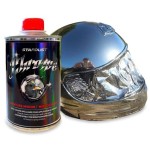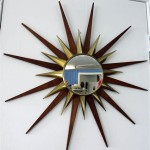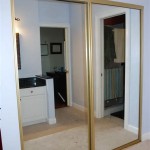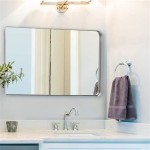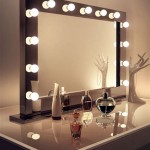Mounting Frameless Mirrors On Walls
Frameless mirrors offer a sleek, modern aesthetic, enhancing the perception of space and light in any room. However, their minimalist design presents unique challenges when it comes to installation. Proper mounting ensures both safety and the desired visual effect, requiring careful planning and execution.
Planning and Preparation
Before attempting to mount a frameless mirror, careful planning is crucial. This begins with accurate measurements of the mirror's dimensions and the chosen wall space. Consider the surrounding décor, furniture placement, and desired viewing angle. Mark the desired position of the mirror on the wall using a level and pencil, ensuring it is straight and at the correct height.
Next, assess the wall type. Drywall requires different fasteners than concrete or brick. For drywall, specialized mirror clips or J-channels are often used. Concrete or brick walls require pre-drilling and the use of appropriate anchors and screws. Always choose fasteners designed to support the weight of the mirror. Consult the mirror manufacturer's instructions for recommended mounting methods and weight limits.
Gathering the necessary tools and materials beforehand streamlines the process. Standard tools include a drill, level, measuring tape, pencil, and screwdriver. Safety glasses and gloves are also recommended. Depending on the chosen mounting method, additional materials like mirror adhesive, clips, J-channels, screws, and anchors may be required.
Choosing the Right Mounting Method
Several methods are available for mounting frameless mirrors, each with its own advantages and disadvantages. The most common methods include adhesive, clips, and J-channels. Mirror mastic, a specialized adhesive, provides a strong bond and is suitable for smaller, lighter mirrors. It requires precise application to ensure even distribution and prevent warping. Larger or heavier mirrors typically benefit from mechanical fastening methods.
Mirror clips offer a secure and adjustable mounting solution. They grip the edges of the mirror, allowing for minor adjustments during installation. Clips come in various styles and finishes to complement the mirror and surrounding décor. They are typically used in conjunction with screws and anchors for a robust hold.
J-channels provide a concealed mounting system, creating a seamless look. The mirror slides into a channel mounted to the wall, offering a clean, minimalist appearance. This method is often preferred for larger mirrors and requires precise measurements and installation to ensure a snug fit.
Installation Process and Safety Precautions
Regardless of the chosen method, careful execution is paramount. Begin by thoroughly cleaning the wall surface where the mirror will be mounted. This ensures optimal adhesion for adhesive methods and prevents debris from interfering with mechanical fasteners. For adhesive methods, apply the mastic in an even pattern according to the manufacturer's instructions. Carefully position the mirror onto the adhesive, ensuring proper alignment with the marked outlines. Apply even pressure to the mirror surface to ensure a secure bond.
When using clips or J-channels, pre-drill pilot holes for the screws, ensuring they are the correct depth and diameter for the chosen anchors. If using drywall, specialized drywall anchors are recommended. For concrete or brick, use appropriate masonry anchors. Securely fasten the clips or J-channels to the wall, ensuring they are level and evenly spaced. Carefully insert the mirror into the clips or J-channel, ensuring it is snug and secure.
Safety should be a primary concern throughout the installation process. Always wear appropriate safety gear, including gloves and eye protection. Handle the mirror with caution, as the edges can be sharp. If working with larger or heavier mirrors, enlist the help of another person to ensure safe handling and positioning. Double-check all measurements and alignments before securing the mirror to the wall. After installation, inspect the mirror for stability and ensure it is securely mounted.
Maintaining proper ventilation during adhesive application is crucial to avoid inhaling harmful fumes. Follow the manufacturer's instructions regarding ventilation and drying times. Avoid applying excessive pressure to the mirror surface during installation, as this can cause cracking or breakage. If using power tools, ensure they are in good working condition and use appropriate safety precautions.
The information provided here is for general guidance only. Consult the mirror manufacturer's instructions for specific mounting recommendations and weight limitations. For complex installations or unusually heavy mirrors, seeking professional assistance is recommended.

How To Install A Mirror Without Frame Merrypad

How To Hang A Frameless Mirror On Wall

How To Hang A Frameless Mirror On The Wall With Pictures

How To Hang A Frameless Mirror On The Wall With Pictures

How To Hang A Frameless Mirror On The Wall With Pictures

How To Install A Mirror Without Frame Merrypad
:strip_icc()/DesireeBurnsInteriors1-f76d25cad90041c88fbae4a7dc10aab4.jpg?strip=all)
2 Simple Ways To Hang A Frameless Mirror

How To Hang A Frameless Mirror On Wall E Architect

Oval Frameless Wall Mirror Installation Fab Glass And

How To Hang A Frameless Mirror June 2024 Your Guide Hanging

